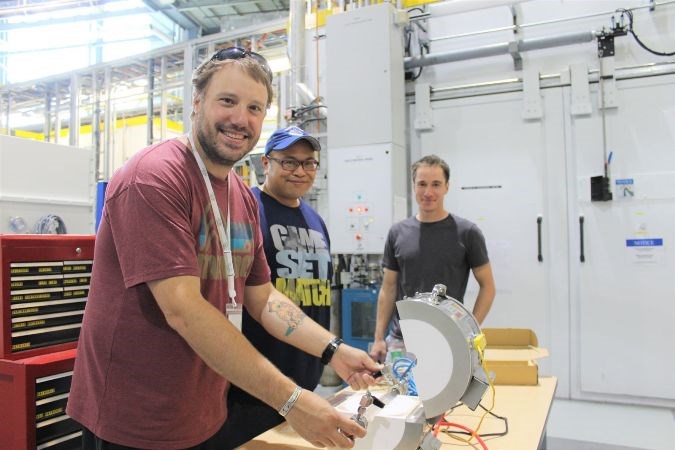Researchers see the potential of hydrogen-based fuels in the fight against climate change and greenhouse gas emissions. While traditional green energy lacks the ability to ramp up energy production, hydrogen-based power can be used quickly to meet demands.
“There is this sort of mismatch between demand and supply with some of those intermittent energies like solar and wind,” said Dr. Simon Trudel, an associate professor at the University of Calgary (UCalgary).
To make green energy solutions more profitable for producers and more accessible to consumers, method of storage is needed. Turning to water electrolysis or water splitting is one way to achieve that.
“The idea is that you take water, which is super stable, and apply energy to it so you can split it back into hydrogen and oxygen,” Trudel said. “Hydrogen is the fuel you want. You can use it in a fuel cell and it can burn quite cleanly, and it gives you back water.”
Hydrogen production through water splitting is accomplished through a reaction that is made more efficient by catalysts.
With the help of the Canadian Light Source at the University of Saskatchewan, Trudel and Dr. Martin Schoen, a post-doctorate candidate with UCalgary, have characterized the structural properties of catalysts made from nickel and iron oxide — cheap materials that are a cost effective alternative to the precious metals generally used as the catalysts.
“Our experiment would not have been possible without the synchrotron,” Schoen said. “We are really grateful to the CLS. They gave us a lot of beam time to do an in-depth study that yielded some really cool things at the end of the day and might open up a new field of research that not many people are looking into.”
In a recent paper, the researchers reported on what structural features govern the efficacy of amorphous nickel-iron mixed metal oxide electrocatalysts used for water splitting.
To understand the behaviour of amorphous metal oxides, Schoen recommends imagining a messy cutlery drawer where instead of organizing knives, forks and spoons by type, someone has just tossed them into a heap.
“It’s like when I was a student and just grabbed everything from the dishwasher and threw it in and it was a whole mess — that’s what amorphous materials are like,” Schoen said.
There are a thousand different ways amorphous materials can look, and it only takes a small amount of energy to shift the way they are organized. With synchrotron technology the team was able to view different disordered states and compare these states with electrochemical properties.
The team also discovered that the reaction must occur partially on the nickel site and partially on the iron site. Schoen compares this to eating a steak — you need both a knife and fork to do it efficiently. For the reaction to occur, you need both the nickel and the iron.
The team’s findings move researchers a step closer to an efficient catalyst for hydrogen production.
“If we can reduce the cost and reduce the energy demand, then you’re getting more hydrogen out per unit of energy that you put in,” Trudel said.




